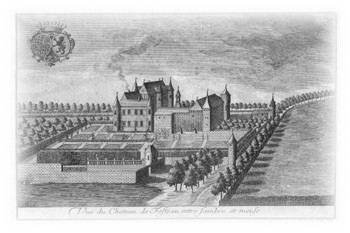| The name “ Fosteau” derives from “forestier”.
Wauthier de Semousies received the property from Duchess Jeanne of Brabant
in about 1380. His successors, the Lords of Sars, then the Lords of Zwenne,
Marotte, Henry and Jamblines, carefully developed the dwellings around the
central keep which marked the residence of the lay lord. It is in this building
that we find one of the finest gothic rooms in Belgium. The marquises of
Barbentane, the heirs of the d’Aousts, managed to keep together the
great agricultural holding in the middle of which the Château stands
out like a stone and pink brick island. The Château and its surrounds
have been a listed monument since 1979. Since 1980, the Château has
been used as the setting for a permanent exhibition of antique furniture
as well as for prestigious cultural events. |
   
 |





